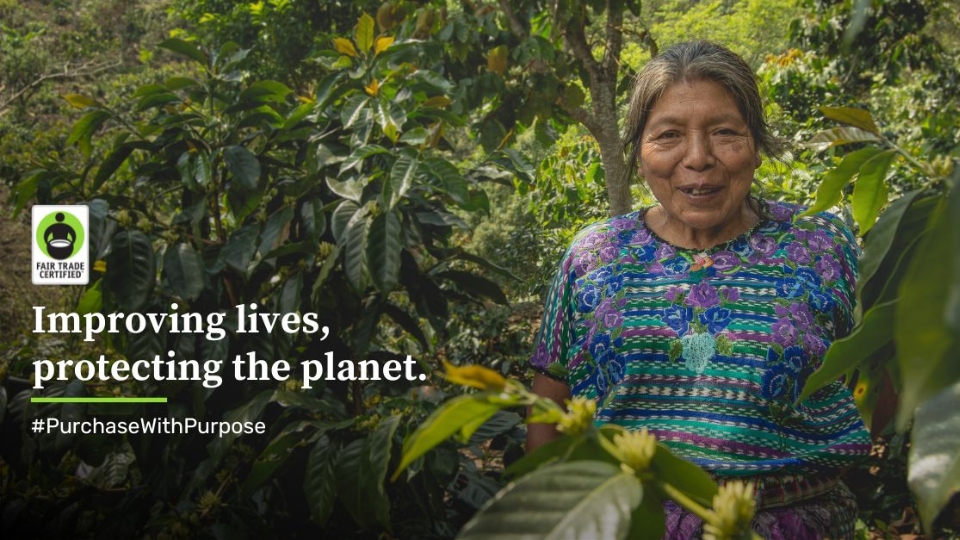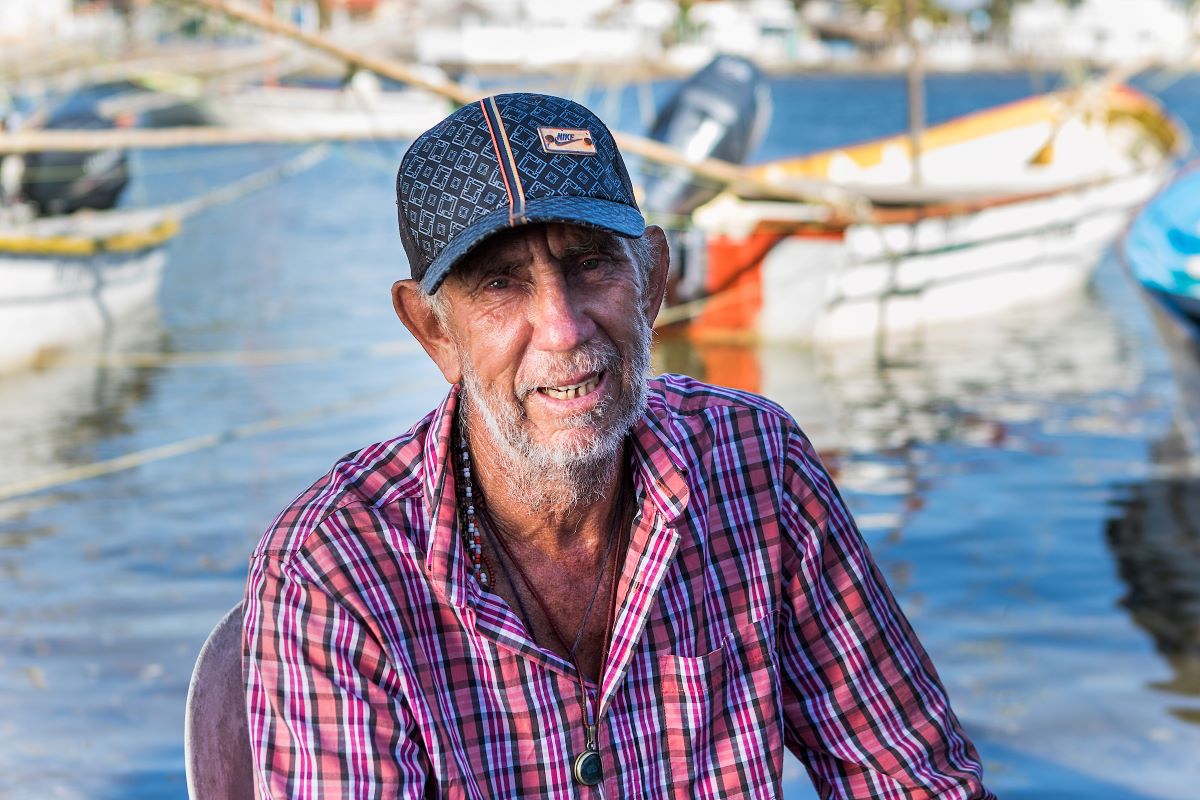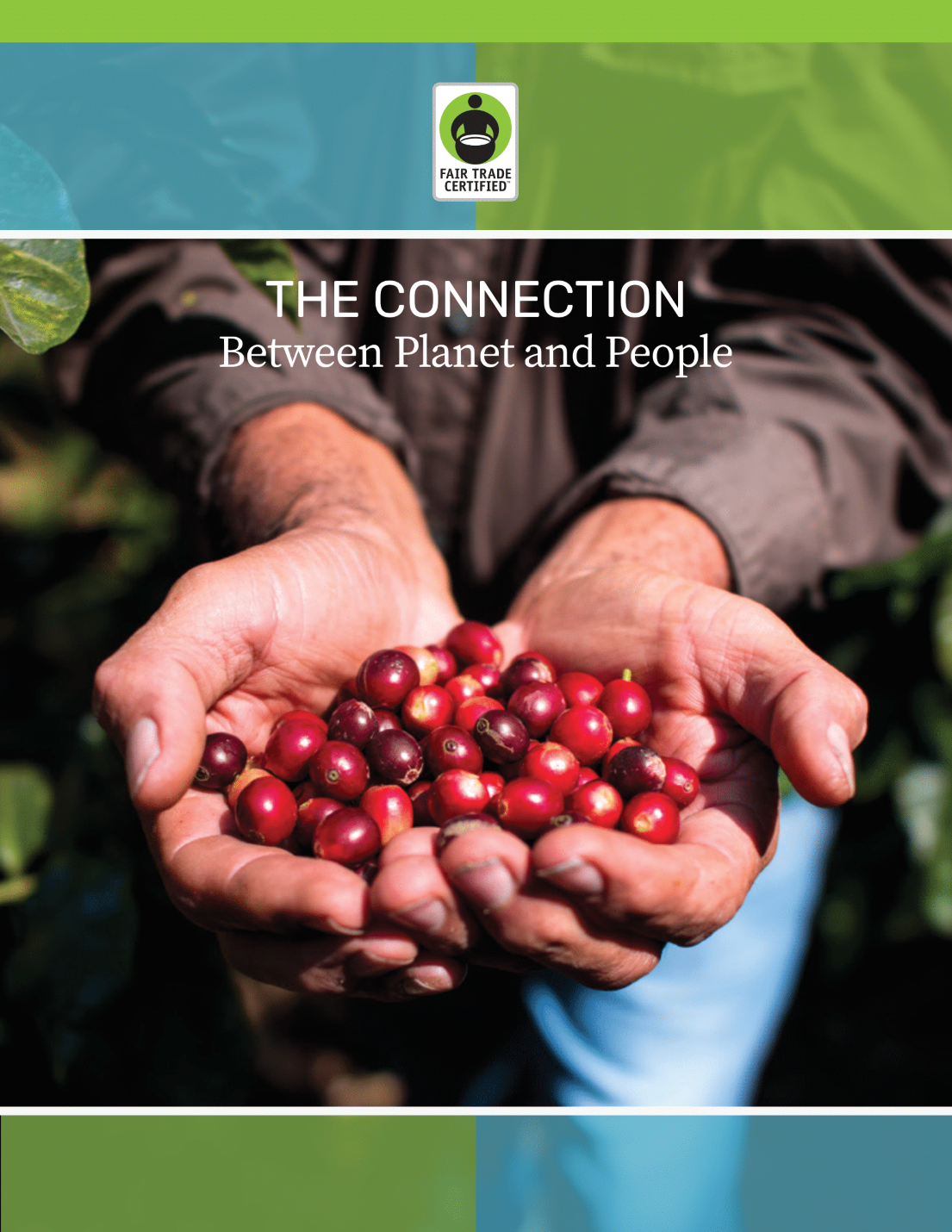When thinking about Fair Trade Certified™, what comes to mind? For many the answers focus primarily on wages and working conditions. Digging deeper, though, at the core of the Fair Trade Certified model lies an understanding that for farmers, workers, and fishers to prosper and thrive, we need to recognize the interconnectedness between the planet and its people.
The production of food and goods impacts the environment, while our changing environment also impacts the production of food and goods. Fair Trade seeks to minimize harm to the environment from production activities while ensuring that producers have the tools to cope with changes in the environment – including climate, severe weather, and pests – and evolve more sustainable production models.

When you choose Fair Trade Certified products, you’re purchasing with purpose and making a conscious decision for a better future for planet and people.
Our Approach to Environmental Sustainability
The Fair Trade Certified program recognizes the connection between planet and people in three ways: by minimizing the environmental impact of production activities; ensuring that farmers, workers, and fishers have the knowledge they need to produce sustainably; and providing funds to support their sustainability journeys.
1. Minimizing the environmental impact of production activities. Across our programs for farms, fisheries, and factories, our standards and certification first seek to prevent harm to the environment. Farmers must use integrated pest management techniques to minimize chemical use, and our standards prohibit the use of the most harmful pesticides. Fair Trade farms may not destroy or degrade natural forest habitats to expand production, a major issue with crops like avocadoes.[i] Our factory standards mandate industry-aligned practices for handling hazardous chemicals to prevent soil and water contamination and protect worker health. Fair Trade fishers must follow requirements around gear, fishing practices, and careful monitoring of ecosystem metrics to ensure the long-term viability of species and avoid overfishing.
Our standards also require all producers to follow local and national laws governing environmental practices, with audits to provide an extra level of incentive to follow these regulations which might otherwise go unenforced.
2. Ensuring farmers, workers, and fishers have the knowledge they need to produce sustainably. Minimizing environmental harm is an important first step, but we go deeper by engaging certified producers as leaders in sustainable production. Required trainings on topics like intercropping, soil analysis, and pest management ensure producers have the tools and knowledge needed to produce sustainably. Our program also provides a structure for producers to put that knowledge into action by creating environmental management systems to prioritize and implement solutions to protect their natural environment.
3. Providing funds to support sustainability journeys. Sustainable farming, fishing, and factory production take time and money, which is where the Fair Trade Community Development Fund comes in. Fair Trade Certified producers receive an extra sum of money from their sales of Fair Trade products. Farmers, fishers, and workers decide how to invest this fund to address the greatest needs of their communities. These community development projects can support investments in sustainable production and help producer communities cope with environmental changes that threaten their livelihoods. In our wild-capture seafood program, fishers must use at least 30% of their Community Development Funds for environmental projects.

“The biggest challenge we face is the preservation of the bay, and we are working hard to address that.” – Gabriel Tiburcio García Inzunza, who has been fishing for 42 years
Fair Trade and the planet-people connection
A trip to the store can make it feel like social and environmental responsibility are competing options. Do you pick the “green” product or the “fair” product? In reality, this is a false choice. The decades-long histories of the environmental justice and Fair Trade movements teach us that social, economic, and environmental sustainability are deeply entangled: to solve one, we must address the others.
Marginalized communities on the environmental forefront
When the state of North Carolina needed a place to dispose of toxic industrial waste in the early 1980s, they picked the small town of Afton, a majority-Black community where 1 in 4 residents was below the poverty line. This sparked protests that brought together environmental and civil rights activists and led to a landmark study that found that “race was the most significant factor in siting hazardous waste facilities, and that three out of every five African Americans and Hispanics live in a community housing toxic waste sites.”[ii]
The modern environmental justice movement grew out of this recognition that environmental harm often falls most acutely on the least privileged communities – a pattern we have seen for decades in the Fair Trade movement. Smallholder farmers have long faced environmental challenges that threaten their livelihoods. Fair Trade Certified coffee farmers in Peru had to move production to higher elevations due to rising temperatures, while “coffee rust” – a devastating fungal crop infection – is growing more widespread with climate change, reducing yields and incomes for small producers. Changing weather patterns are also affecting harvests for cocoa farmers in the Ivory Coast, and cocoa growing areas are expected to shrink as global temperatures rise.[iii]
To solve global poverty, we must recognize that 80% of the world’s poor live in rural areas – mostly working in farming – and will need tools, knowledge, and resources to adapt to a changing climate.[iv]
Empowered communities are environmental problem-solvers
While farmers, fishers, and workers are vulnerable to a changing environment, they can also be creative leaders at the forefront of environmental solutions. When those at the core of global supply chains have the tools to put their lived experience into action, we see innovation that lifts up livelihoods and ecosystems alike.
In the Fair Trade Certified program, many producers and workers recognize the link between environmental and economic vitality, and put their Fair Trade funds to work accordingly:
Farmworkers at Wholesum’s Fair Trade Certified greenhouse farm in Sonora, Mexico voted in 2016 to invest their Community Development Funds to build a store where their families and the community could buy food and essential goods at discounted prices. When electrical bills of nearly $2,000 per month threatened the store’s viability, workers used additional Fair Trade funds to install solar panels to power the store. In a win for the community and the environment, the panels should pay off in just three years, while saving 1,000 tons in CO2 emissions over their 40-year lifespan.
Fair Trade Certified fishers in communities around the globe are using their Community Development Funds to address issues that threaten both ecosystems and livelihoods. In Mozambique, the Maldives, and Indonesia, fishers invested in beach cleanups and plastic recycling programs to reduce marine trash – a significant problem for fishing communities. Shrimp fishers in Mexico used their Fair Trade funds to transport shrimp larvae from threatened waterways to less-polluted estuaries where more will survive and mature, an investment towards a more robust shrimp population and their own future livelihoods.
If we want farms with low carbon footprints, fishing practices that protect marine ecosystems, and factories that don’t pollute waterways, the farmers, workers, and fishers at the heart of global supply chains must first be resilient, prosperous, and thriving. This means investing in solutions like Fair Trade that build a foundation of sustainable incomes and safe working conditions while providing resources for communities to tackle the interwoven economic and environmental challenges of the years to come.
The Connection Between Planet and People

Access our full report to learn more about our approach to the environment and hear how Fair Trade Participants have had a positive impact on their local environments.
Join Our Fair Trade Community
Join our dedicated community of conscious consumers, and stay informed on the latest news and updates, learn about your impact, upcoming events and more!
Sources
[i] https://www.canr.msu.edu/news/avocado_consumption_environmental_and_social_considerations
[ii] https://www.energy.gov/lm/environmental-justice-history
[iii] Source: Fair Trade USA’s Planet & People White Paper